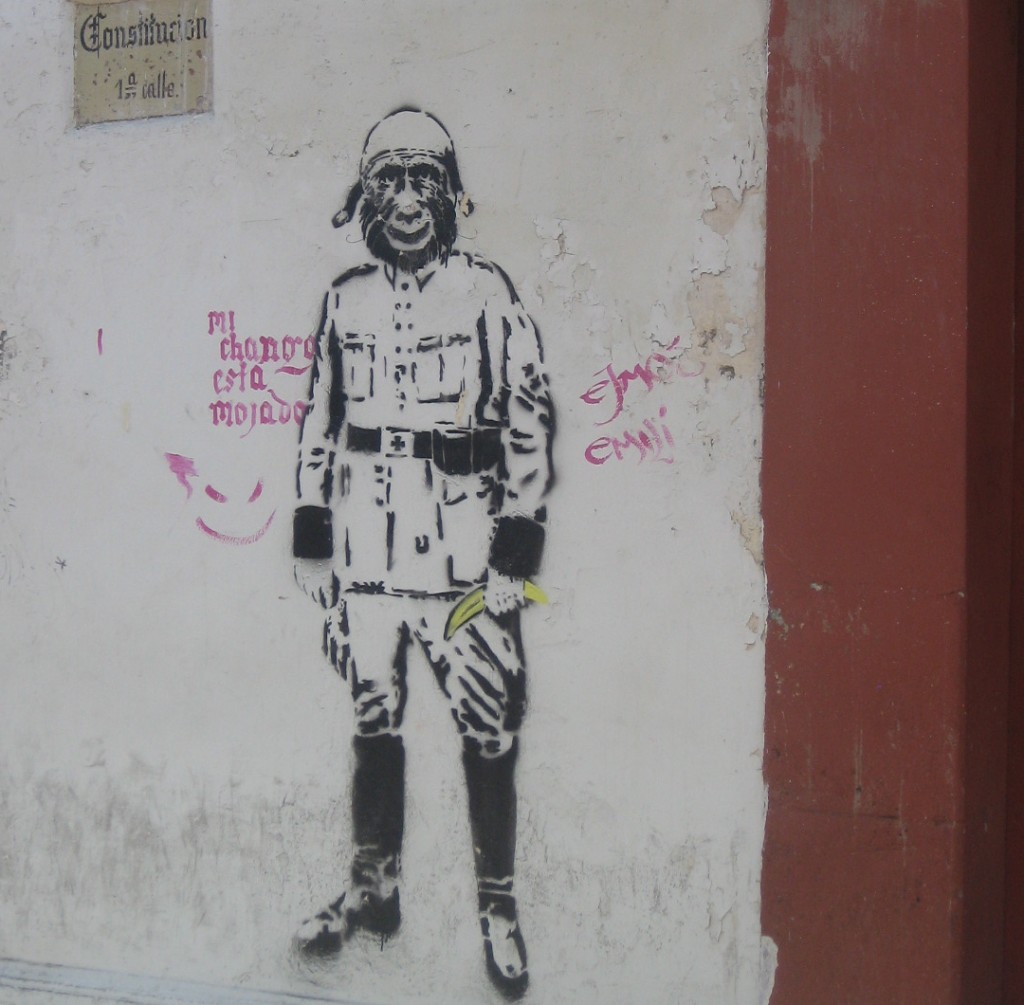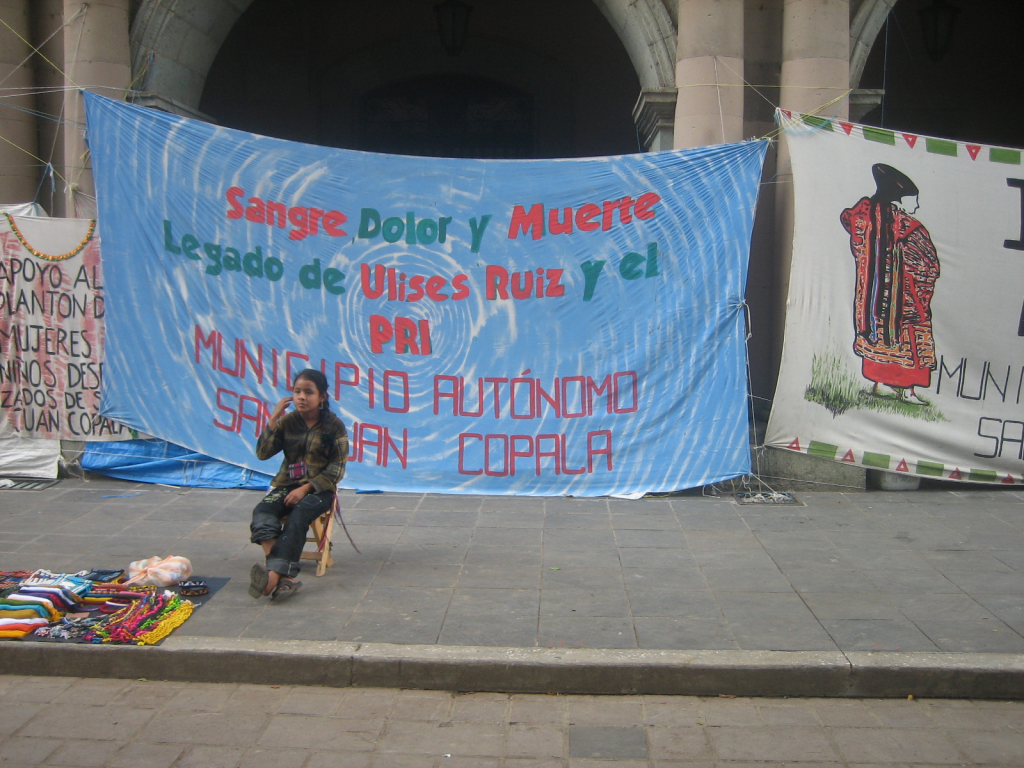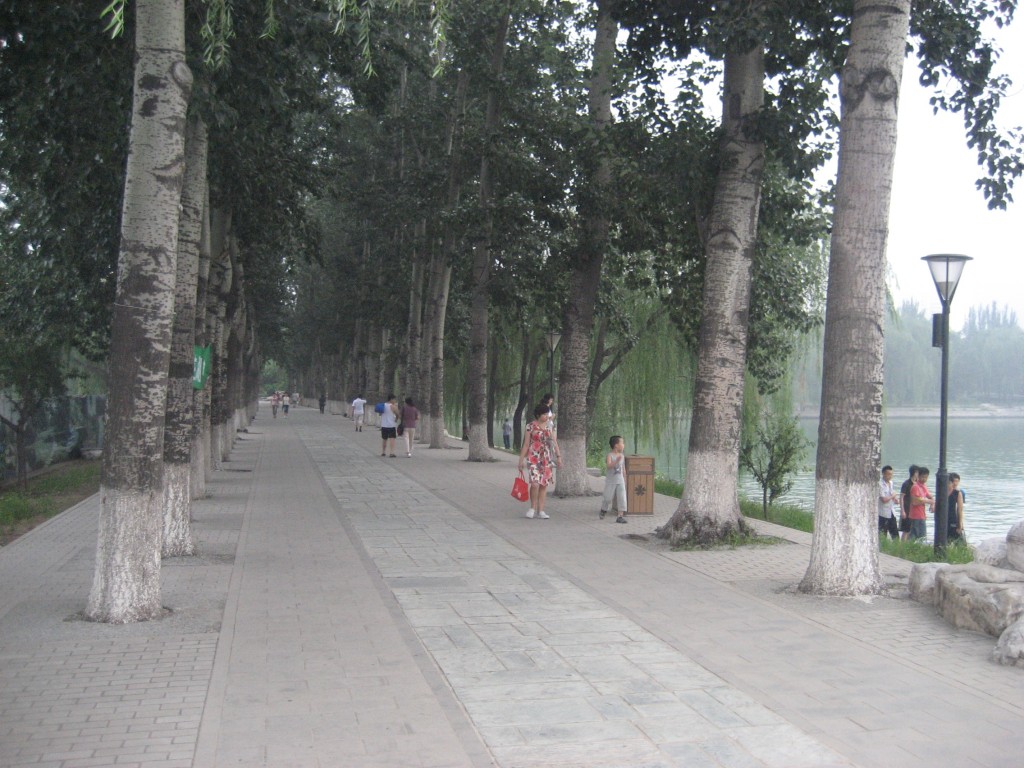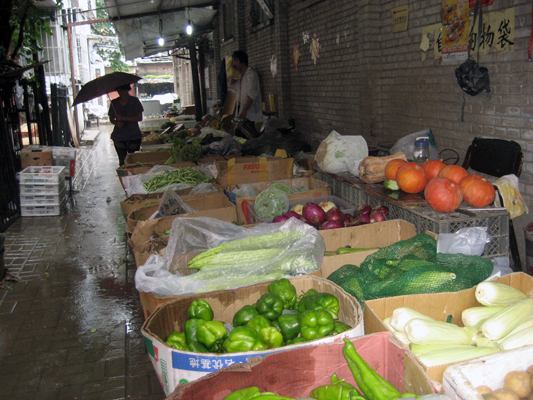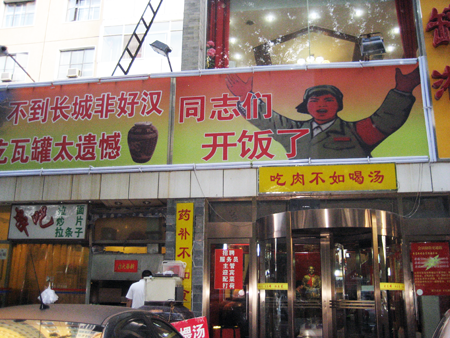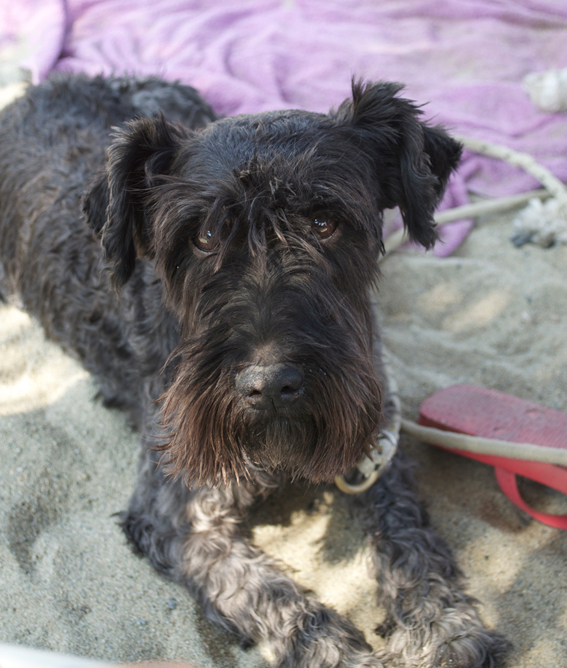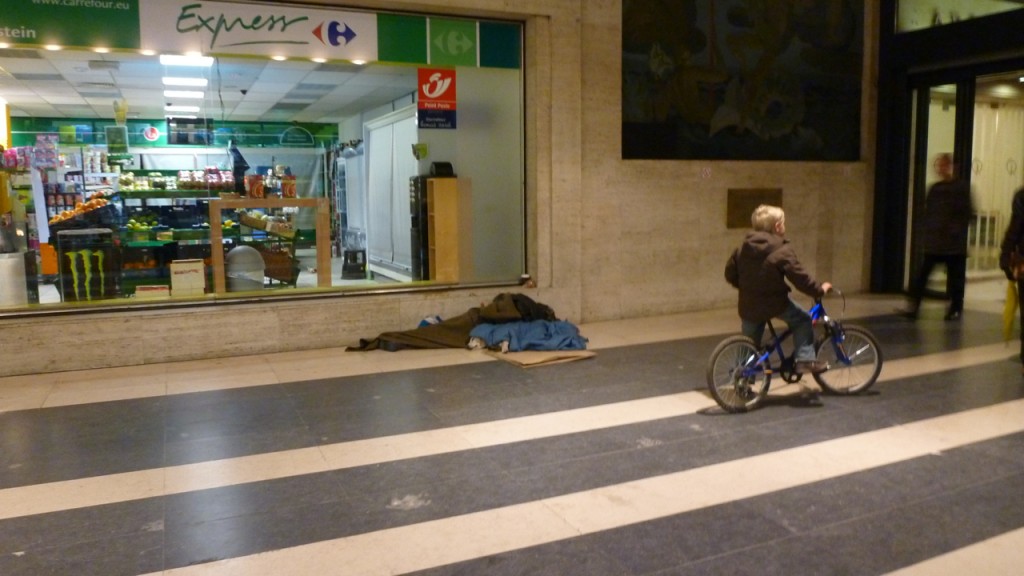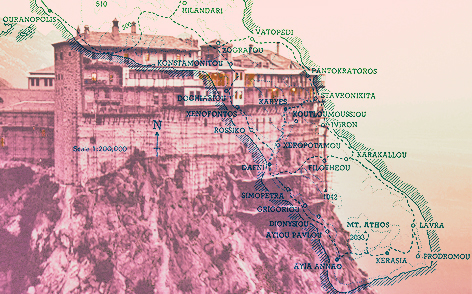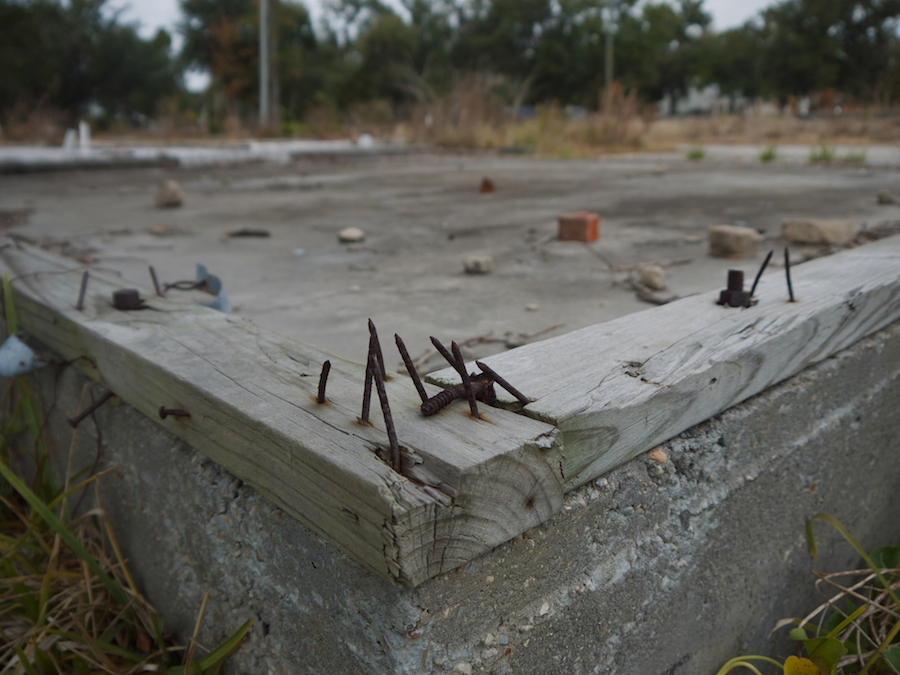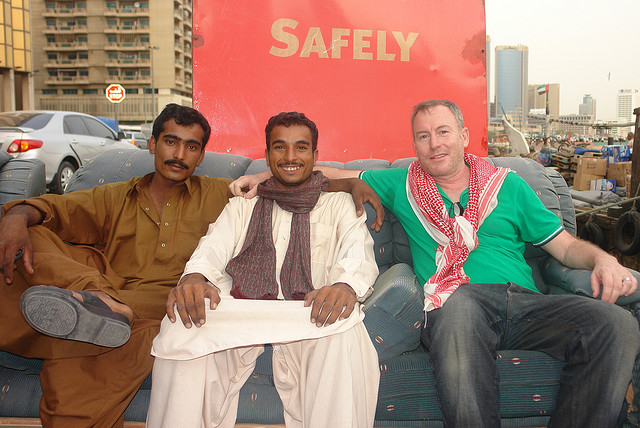Antonio tells me that after the 2006 uprising, street art flourished. There are still signs of it flowering all over the city. I was fascinated by the fact that the street art in Oaxaca could pass muster in San Francisco. Clearly, the street art in both places flow from the same urban aesthetic. However, Oaxaqueño artists have developed their own local flavor. (More…)
TravelTravel
Travel
I’m standing in line to enter Taipei’s Din-Tai-Fung, one of the world’s most famed dumpling restaurants, when they arrive in a double-decker bus: rows of white people neatly stacked on top of each other, gazing out through tinted windows at a world that isn’t theirs. They begin clambering off the bus a little ways up from where I stand and even before they reach the line, even before I hear them speak, I know they are Americans. (More…)
I came to Oaxaca on a whim. A friend announced that she was taking a trip south (I live in northern California,) so I decided to tag along. I hadn’t been to the country since I was a kid, when my family took a cruise to Acapulco.
My knowledge of Mexico was spotty. Besides a smattering of Zapatista lore and typically tabloid news fare (maquiladoras, illegal migrants, narco-violence, etc,) my ideas about the country came from a book by Oliver Sacks, about Oaxaca’s biodiversity. He has a thing for ferns. (More…)
The north entrance to Yuyuantan Park in Beijing’s Haidian district is not the main entrance. After passing through a working-class neighborhood of three and five-story brick apartment buildings, this entrance is at the bottom of a sloping street lined with fruit-sellers and hawkers. On one side of the street, an old neighborhood is being demolished; on the other side, new apartment buildings have arisen. These buildings are handsome, understated, some of the most expensive in Beijing, and the residence of the new neoliberal elite. (More…)
About fifty meters east from the D exit of the Suzhoujie station on Beijing’s Number 10 metro line, is a small alley market. You walk along the main street, take a gated entryway for five meters, and there, parallel to the street, is a narrow alley with two stands. The first sells vegetables. The second sells peaches, apples, and lychee. A third uses crates on the sidewalk to sell brown hen and salted blue duck eggs, together with oil, pasta and a couple of common kitchen items. (More…)
Collegno is not the first place you’d choose to receive a refresher on genocide. A small working class municipality on Torino’s west side, in my household, its claim to fame is its Ikea. Step inside on a Sunday afternoon, and you’ll find the cafeteria packed with local families enthusiastically gorging on plates of Swedish meatballs. (More…)
Several blocks away from our apartment in Beijing’s Haidian district, a retro ‘red’ restaurant stands alongside the street. Its walls are decorated with photos of Mao Tse Tung and Zhou Enlai along with applauding Communist Party cadres. All the famous faces are here, with many enlarged photographs hanging on the walls and dining booths. (More…)
The bathroom was empty. The floor was clear. There was no sign of him underneath the sofa. He wasn’t on the balcony, either. Looking at the roof of the cafe below, I started to panic. Raster wasn’t the most agile of creatures. Had he lost his balance?
“Raster,” I yelled out. “Raster!” People started to look out their windows, wondering what I was going on about. I noticed a faint shadow on the cafe roof. I could hear a dog whimpering. A small black head pushed itself out from underneath a ledge. (More…)
An obscure little place squeezed between bigger powers, Belgium has always been… well, different. For example, it is the first working anarchist state. It has not had a government since June 2010, when the previous one was dissolved following parliamentary elections, which the ruling right-of-centre coalition lost and Flemish nationalists and Walloon socialists won. This would be like Ralph Nader having to form a government with Pat Buchanan and Michele Bachmann. Talks have predictably gotten nowhere. (More…)
One of the more astonishing moments among autobiographies appears in Maryse Choisy’s Un Mois Chez les Hommes (1929). In preparation for a visit to Mount Athos, the long peninsula in northern Greece that constitutes a monastic republic where, by religious edict, women have been forbidden to visit for over a thousand years, Choisy relates how she decided to have an elective bilateral radical mastectomy. (More…)
When my mother’s worsening health recently made it necessary for my parents to relocate from the Washington D.C. area, where they had lived for over three decades, to be near me in Tucson, Arizona, I volunteered to drive both their cars across the country. (More…)
I’m having a peaceful evening in my hotel in Dubai. The Al Manzil, built in a pleasant faux-Arab style, is close to the kilometer-high (give or take) Burj Khalifa, and right across the road from the entrance to the very new Old Town (it opened three years ago,) a lovely contraption of high-end Arabic architecture, fountains, shops, five star hotels and restaurants. (More…)
